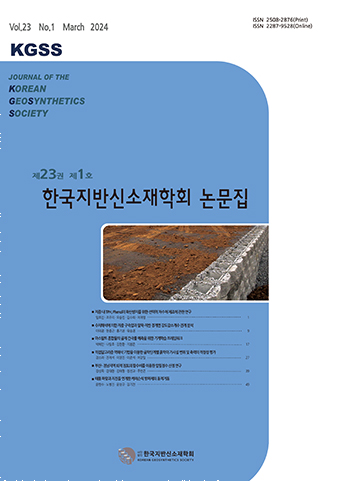Research Article
Abstract
References
Information
- Publisher :Korean Geosythetics Society
- Publisher(Ko) :한국지반신소재학회
- Journal Title :Journal of the Korean Geosynthetics Society
- Journal Title(Ko) :한국지반신소재학회 논문집
- Volume : 21
- No :1
- Pages :49-56
- Received Date : 2022-02-24
- Revised Date : 2022-03-24
- Accepted Date : 2022-03-25
- DOI :https://doi.org/10.12814/jkgss.2022.21.1.049




 Journal of the Korean Geosynthetics Society
Journal of the Korean Geosynthetics Society








